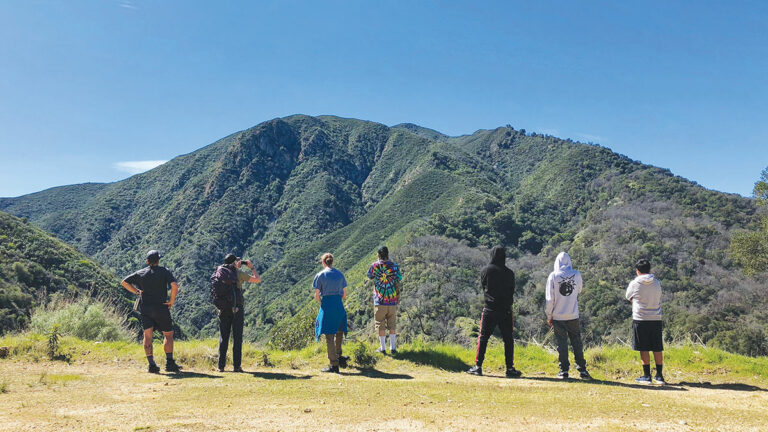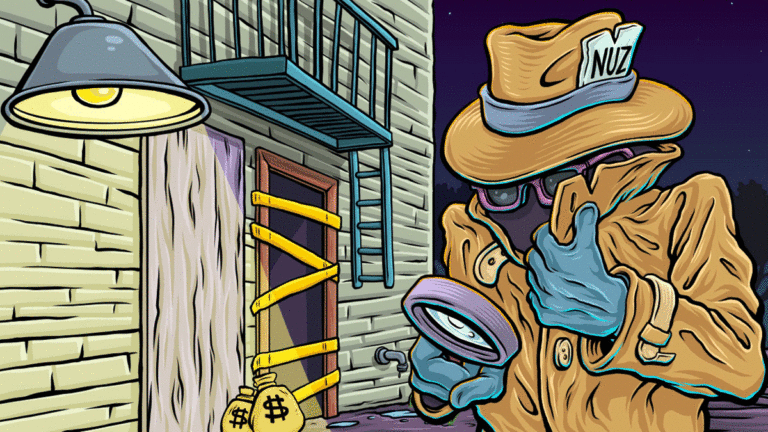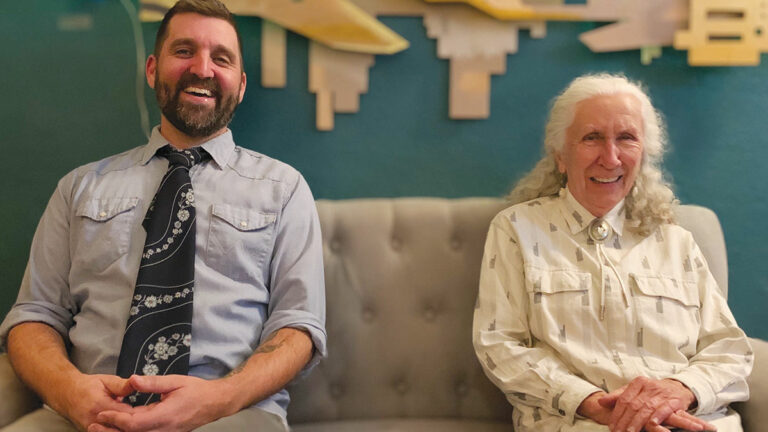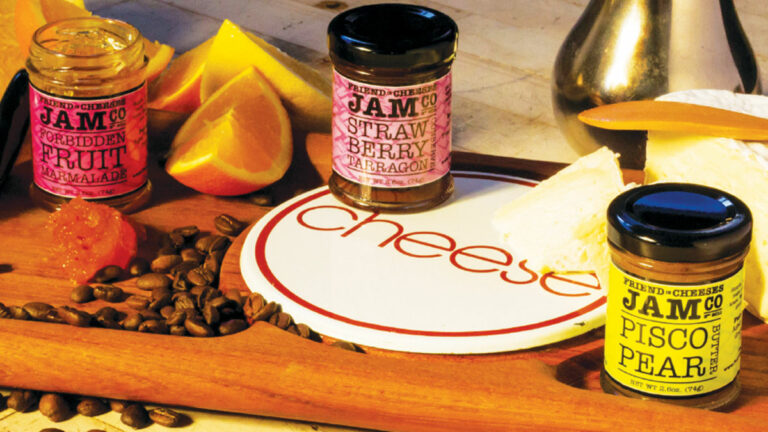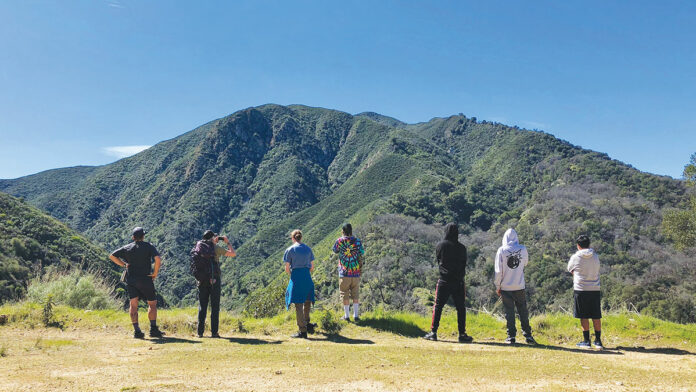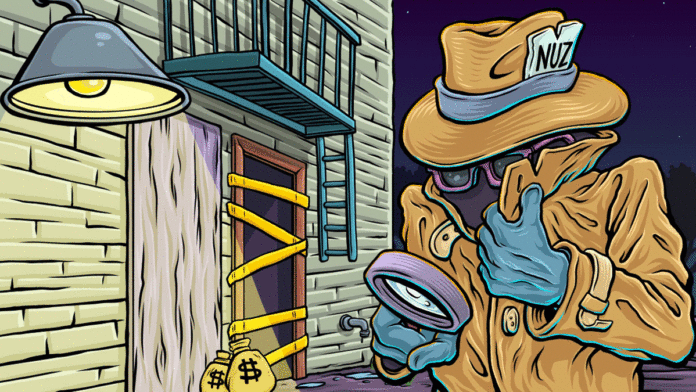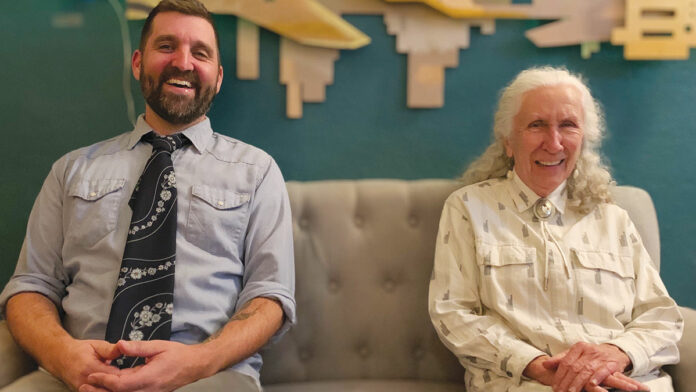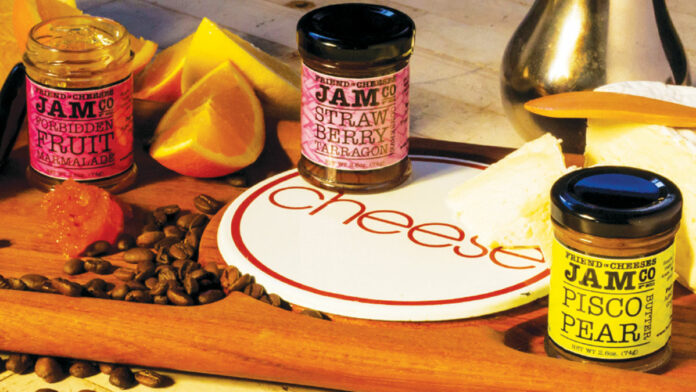Helping students scale a rock face or backpack through the wilderness is just a typical day at the office for Mountains 2 Sea co-founders Jamey and Brian King. Through its year-round program, the Santa Cruz nonprofit takes youth ages 15-19 on about 30 outdoor adventures annually. That includes sailing trips, hikes and environmental stewardship activities, like cleaning up beaches, soil sampling and planting native species.
“We use outdoor activities as a catalyst to really help the kids challenge themselves and find some new self-confidence,” Brian explains. He says that while the outdoor excursions are fun, they’re about more than just adventure. “Our real goal is to help them find compassion for themselves, which leads to compassion for others, and then compassion for the environment.”
Mountains 2 Sea is participating this year in Santa Cruz Gives, the community fundraising drive sponsored by GT that helps support local nonprofits during the holiday season. Mountains 2 Sea is one of 19 education-based organizations participating this year. The group gets a small program fee—usually less than 10% of its total budget—from participating schools, and it relies heavily on fundraising for the rest.
The Kings, who both have backgrounds in classroom teaching, focus their program on helping youth who come from difficult, often-traumatic home lives. To help students open up, each weekly lesson begins with an emotional well-being check-in. Students share warm drinks, like tea or hot cocoa, while setting intentions for the day and sharing experiences.
“This honestly is one of the most impactful parts of our day,” says Jamey. “It can last anywhere from 10 minutes to an hour.”
Each nonprofit participating in Santa Cruz Gives has a “big idea” that its fundraising haul will support. Mountains 2 Sea is raising money to help fund six sailing adventures and three rock-climbing excursions.
Jamey says that sailing in particular creates the opportunity for the students to learn how to work as a team. “Every time we go out, the students prepare, rig and even drive the boat,” she says. “That requires high levels of communication and working together.”
During the climbing excursions, students receive safety lessons, earn belay certifications, and practice at the local climbing gym Pacific Edge before taking their skills to Castle Rock State Park. Jamey notes that for many students, trusting others can be difficult. Climbing lets them practice trusting their belayer, who controls the climbing rope, with their lives.
The nonprofit also helps students get to know the surrounding ecosystems in Santa Cruz County. “Land and access to parks should not be a privilege,” says Brian. “I really believe that students will be healthier and families will be happier if they just understand how to access the land.”
Having a chance to unplug and unwind during outings, all of which are device-free, also helps students focus on regular classroom studies, Brian says. “Nature has this way of bringing your anxiety down. It’s calming and it’s a slower pace than our technological-driven lives,” he says. “After getting them out for the day, they would come back to the classroom a little more ready to learn or able to process a little more of their lives.”
That sentiment is shared by the Bird School Project, another local nonprofit participating in this year’s Santa Cruz Gives. The group works with more than 3,000 middle school-aged students each year, teaching them about the values of birding and environmental awareness.
“Our general mission is to inspire and equip both students and teachers to love, study and steward their local environment,” says Kevin Condon, co-founder and executive director of the Bird School Project.
Rather than taking students on field trips, the Bird School Project focuses primarily on introducing students to their own campuses. To do this, instructors lead students through birding lessons in their schoolyards.
“The main goal is to show the students that you don’t have to go far to experience nature and start developing a connection,” says Condon, “We really aim to have it be a part of their science class and their schoolyards.”
During lessons, students learn how to use a field guide, identify local birds, record their findings and relax in their local environment.
“Being an adolescent person is a distracting time. There’s so much going on socially for these students,” he says. “Getting them outside and getting them in a space where they can be undistracted, even just for an hour, to me that feels like the most important part of what we do.”
Visit santacruzgives.org to donate to any of this year’s 37 participating nonprofits.


